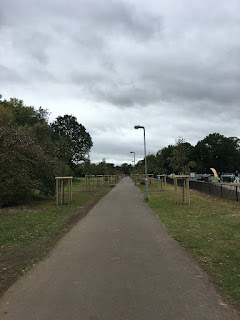The UK-COMPASS data is out…
The UK-COMPASS data is out…
https://www.ejves.com/article/S1078-5884(24)00197-7/fulltext
This is really important data for all Vascular Surgeons across the world.
Aneurysms are being treated in many different ways in the UK and with launch of NCIP (https://gettingitrightfirsttime.co.uk/associated_projects/ncip/) to complement the NVR (https://www.vsqip.org.uk) benchmarking is improving nicely.
What this paper adds is a quite stark and often scary insight into how things are being managed.
Open surgical repair of abdominal aortic aneurysms is a high stakes, difficult procedure, but once it's done it's done. Standard endovascular repair is a much lower stress procedure, but once it's done it's life long surveillance and significant risk of repeat procedures.
Without a doubt endovascular repair of infrarenal aneurysms has offered repair to many more people than would have been suitable previously. However, we now know that pushing the boundaries of the stent grafts available (good though they are) leads to problems, often in people who might not be able to tolerate further interventions.
Doing the right thing properly is clearly the right answer - whilst you might complete an EVAR safely, if it's not a good seal zone at the top you rapidly lose that benefit over open repair (and that is small).
Read the paper - it's really interesting and to see how other countries have moved almost completely towards EVAR, it shows how maybe the pendulum should swing back, like it has in the UK.
Additionally the data available now from the NAAASP on rupture rates, the IMPROVE study and in fact the natural history study enforced on us during COVID suggests rupture rates oft quoted are much higher than the reality and that we should be more realistic. After all - repair should be for those with a long survival to justify the risks. Rupture risks of about 0.5% per year at 5.5cm on ultrasound, compared to 0.4% (EVAR) and 3.0% (open) risk of death at 30 days post operatively. That is we are increasing the risk of death in the short term to try and reduce it long term. This is on the background of a a significant period of recovery.
Unfortunately, despite the many risk calculators, all are just tools to help the process. Picking right is key.
I like the Carlisle Risk Calculator https://carlislerisk.shinyapps.io/RiskCalculator/ to help show things nicely or the ACS risk calculator https://riskcalculator.facs.org
But nothing beats the end of the bed-o-gram… Yet…


Comments